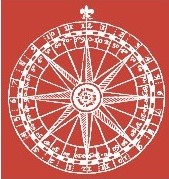Publics souhaités, publics refusés : les publics comme critères de la valeur de l’oeuvre dans les années 1550
In the context of the exacerbated poetic tensions of the 1550s, the readerships defined by authors are manipulated to serve as arguments in constructing the merits of a work or in discrediting it. Innovative poets and their opponents thereby work to…
Listée dans Article | publication par groupe Iter Community
Version 1.0 - publiée le 27 Aug 2025
Sous licence Creative Commons BY-NC 4.0
Description
In the context of the exacerbated poetic tensions of the 1550s, the readerships defined by authors are manipulated to serve as arguments in constructing the merits of a work or in discrediting it. Innovative poets and their opponents thereby work to designate the audiences they claim to have, to reject those they deem unworthy, and to deny one another valuable readership. These debates, embedded in the texts, offer clues towards a better understanding of the measures of value being discussed at the time, not only in terms of the texts but also in terms of audiences. Peers, erudite men, royalty, or even women appear as more or less legitimizing readerships, depending on the authors’ different points of view.
Citer ce travail
Les chercheurs doivent citer ce travail comme suit :
Tags
Notes
Original publication: Bonifay, Florence. "Publics souhaités, publics refusés : les publics comme critères de la valeur de l’oeuvre dans les années 1550." Renaissance and Reformation 42 (1): 2019. 233-256. DOI: 10.7202/1064526ar. This material has been re-published in an unmodified form on the Canadian HSS Commons with the permission of Iter Canada / Renaissance and Reformation. Copyright © the author(s). Their work is distributed by Renaissance and Reformation under a Creative Commons Attribution-NonCommercial 4.0 International License. For details, see https://creativecommons.org/licenses/.
Aperçu de la publication
Iter Community
This publication belongs to the Iter Community group.
When watching a publication, you will be notified when a new version is released.
